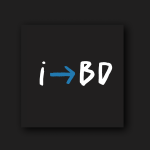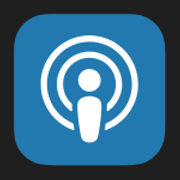The Owner–Operator Trap: Why Growth Isn’t Setting You Free

Most business owners are chasing the same thing:
Freedom.
→ To step back without guilt
→ To be rewarded for the risks you’ve taken
→ To use your time how you want — not how the business demands
That’s the dream.
And on paper, it looks like you’re getting closer.
The company’s grown.
Revenue’s up.
The team’s bigger.
You’re doing what everyone said you should:
Grow. Hire. Systemize. Delegate.
But here’s what no one tells you:
Growth doesn’t automatically lead to freedom.
In fact, for most owners, it does the opposite.
Instead of feeling more free, you feel more trapped.
The business is bigger — but it still depends on you.
And now the pressure is even heavier.
You’ve got more employees to support.
More customers to keep happy.
More complexity to manage.
More cash flow to juggle.
And even though the numbers look good…
→ You’re still answering the big questions
→ You’re still holding the vision
→ You’re still the one people lean on when things get hard
From the outside, it looks like success.
But inside, it feels like the opposite of freedom.
You start asking yourself:
→ Why am I still so involved?
→ Why can’t I step back?
→ Why does this whole thing still rely on me?
The truth is, you didn’t do anything wrong.
You’re not failing.
You’re just stuck in a structure that wasn’t designed to set you free.
Two Roles. One Body. One Trap.
As an owner-operator, you wear two hats: Owner and Operator.
→ As an Owner, you care about time, cash flow, and equity.
→ As an Operator, you care about sales, delivery, and team performance.
Both roles matter.
Both roles are real.
But they pull in different directions.
Operator | Owner |
Works in the business | Works on the business |
Trades time via a salary for money | Allocates time and money to build wealth |
Focused on daily execution | Invests for long-term value |
Manages people and problems | Weighs investment tradeoffs |
Measures success by project completion and revenue | Measures success by cash flow, valuation, and return in investment |
And here’s where it gets tricky…
Most owners never separate the two.
They spend years making operator-level decisions — while holding owner-level responsibilities.
That’s the trap.
You want freedom. | But your days are still full of meetings, emails, client issues, and team decisions. |
You want to build wealth. | But you’re optimizing for this week’s payroll instead of next year’s valuation. |
You want to step back. | But you’re still the one keeping it all from falling apart. |
And the deeper you are in the business…
→ The harder it is to zoom out
→ The blurrier the owner role becomes
→ The more every decision feels reactive
You might have owner-sized goals — but you’re using operator-sized tools to get there.
No one teaches you how to shift out of that.
→ Your EOS© Implementer focuses on organizational goals and structure
→ Your CPA focuses on taxes
→ Your family wants more time and money
→ Your wealth advisor focuses on liquid investments
Everyone has a tool.
Everyone has a lens.
But no one is helping you balance both roles — and design a path to true independence.
That’s why the Independence by Design™ Framework exists.
Not to throw out the operator role — but to give your operations context within your ownership goals.
You’re not just running a company.
You’re should be building a machine that’s satisfies your ownership goals.
And the only way that works…is if you start making decisions through the lens of an owner — not just an operator.
The hardest part about being stuck in the trap is that you don’t know you’re in it.
It’s not obvious.
There’s no flashing warning sign.
Everything looks fine on the surface.
→ The business is growing
→ The team is running
→ The numbers look solid
But inside, something’s off.
You’re tired.
You’re second-guessing.
Deep down, you feel that you are not getting closer to the life you actually want.
It’s not because you’re doing it wrong.
It’s because the system you’re in was never designed to produce owner freedom.
I call it the Owner–Operator Trap, and it has a clear structure.
It’s like the Matrix, once you see it, you can’t unsee it.
There are three forces behind the Owner-Operator Trap:

❌ 1. Gut-Based Decisions
You’re making high-stakes calls about time, capital, and people — without a clear scoreboard.
No visibility. No alignment. No structured way to weigh trade-offs.
You’re flying without a decision-making framework.
Without clear time, cash flow, or wealth goals, every decision feels emotional, every next step feels like a guess.
And when the pressure’s high, even smart moves feel risky.
❌ 2. Unpredictable Cash Flow
You’re profitable — but you don’t feel confident enough to fully step back.
Distributions are sporadic. Reinvestment decisions are gut checks.
You don’t know what you can take out, what you need to keep in, or how much runway you actually have.
So you stay conservative.
Or you push too hard.
And either way, the pressure builds.
You’re the last to get paid — and the first to absorb the risk.
❌ 3. Stuck in Operations
You’ve hired people. You’ve built systems.
But you’re still the one solving the big problems. All the big decisions still land on your lap.
The business doesn’t run unless you do.
Your calendar is still packed. Your mind is always spinning.
You’ve created value — but it’s trapped inside your role.
That is the structure of the trap.
Can you see it now?
You don’t even realize you’re in it until you’re burned out.
You’ve done everything right —
→ You’ve hired the team
→ You’ve read the books
→ You’ve implemented the systems
But you still feel stuck.
Still reactive.
Still unsure how to get free.
That’s why this framework exists.
Because solving the trap doesn’t start with doing more.
It starts with seeing clearly.
Once you recognize the pattern, you can start designing your way out.
Not by working harder.
Not by installing another system.
But by shifting the lens you’re using — from operator to owner.
And building a structure that aligns your business to your goals.
The Shift from Stuck to Aligned
You didn’t build your business to chase revenue.
You built it to create freedom —
→ Time to live the life you want
→ Cash flow you can rely on
→ Wealth that gives you real choices
But somewhere along the way, that vision got buried.
You grew.
You hired.
You solved one problem after another.
And now you’re wondering: “Why doesn’t it feel like I’m not making progress?”
It’s not a motivation problem.
It’s a misalignment problem.
Most business frameworks teach you how to run the machine.
But almost none of them ask a more important question:
What is this machine actually for?
→ What do you want it to produce?
→ What does success look like — for you?
→ And how do we align the business to that?
Not for your team.
Not for a buyer.
Not for your bank or your board.
For you.
Because here’s the truth:
The business isn’t the goal.
The business is the vehicle.
And until you define where you want it to take you —
→ With real clarity around time, cash flow, and wealth
→ With structure that turns your goals into a strategy
→ With rhythm to keep you aligned and in motion
You’ll keep solving the wrong problems.
You’ll stay busy — but not free.
Successful — but stuck.
That’s why this I created the Independence by Design™ Framework.
Owning a business is not just about growing revenue, adding employees, or hitting the Inc. 5000. It’s about designing a business that satisfies your goals.
And it starts with a question most owners never slow down to ask:
What do I want want from my business?
That’s where Independence by Design™ begins.
With a new lens.
With a new decision-making framework.
And with a new playbook — built for ownership.





